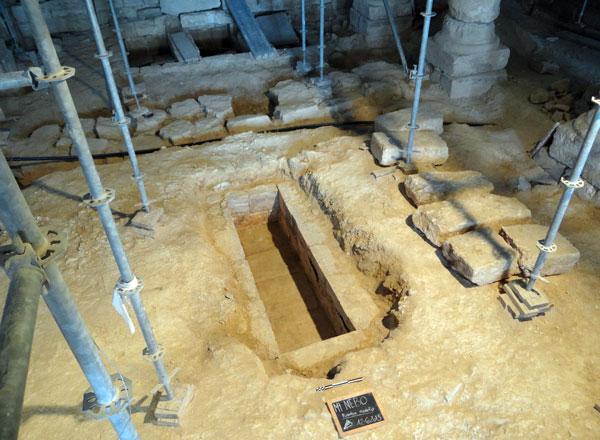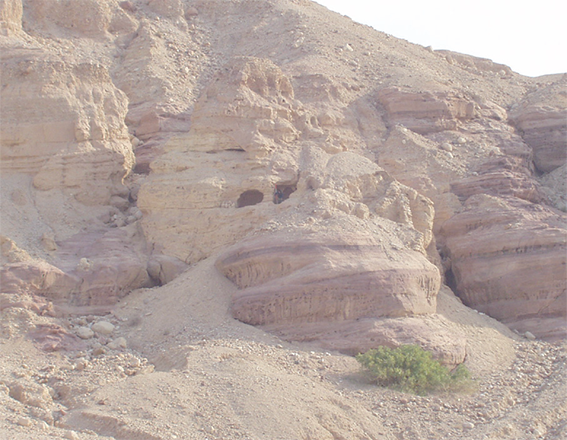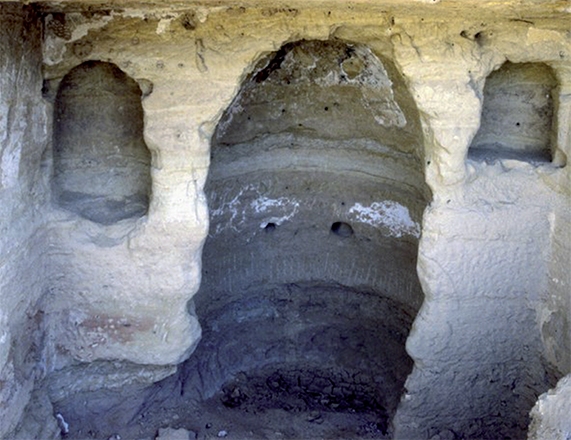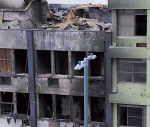You are here
Beyond the sands: Delving into ancient hermit monasteries
By Saeb Rawashdeh - Jan 24,2024 - Last updated at Jan 24,2024
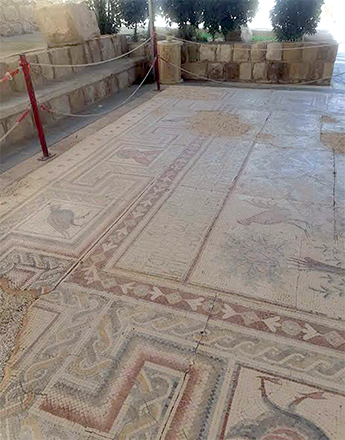
AMMAN — During the 3rd century AD, monks established the first monastic centres in the Levant, drawn to this region for its suitability for an anchoritic life, marked by an isolating existence in the desert.
Both anchoritic and coenobitic models of monasticism spread to modern Jordan’s area. Even though the two religious disciplines differed in style, they both share fundamental values, geographic space and cultic purposes. Ancient travellers mention, in their itineraries, hermits living in caves on Lisan Peninsula or in Wadi Musa, while other type of monks, who lived in their communities, created first monastic foundations and rules.
“Some monasteries were indeed built near ancient Roman castra, as in Khirbet Munya Asfour, Qasr Al Bid, Deir Al Kahf, Jabal Quais and probably Qasr Al Hallabat, while in other cases the monastic compounds were placed in isolated locations, like the monasteries of Zay Al Gharbi, Khirbet Munya, Khirbet Al Kursi, and ‘Ain Jammaleh,” noted Davide Bianchi from the University of Vienna.
Monks provided pilgrims with food, water and shelter and assisted other various needs of their visitors. Particular attention was paid for rooms where food was prepared and preserved, and for cisterns that collected water.
“A proper approach to the origin of the biblical memorials must necessarily focus on the issue of the discovery of tombs and relics associated with the venerated figures of the Old and New Testaments,” Bianchi said, adding that this practice can be traced back to the time of the enhancement of the holy places initiated by Emperor Constantine (306AD-337AD), following the promulgation of the edict of religious tolerance in 313AD.
“In fact, the early decades of the 4th century saw intense construction activity, frequently with Imperial involvement, at the most important places connected with the life of Christ,” Bianchi continued, adding that among the first examples are the two Constantinian basilicas of Jerusalem and Bethlehem.
These coenobitic foundations comprised the monastery of the Memorial of Moses, on Mount Nebo, the monastic complex of St Aaron in Petra, the two religious compounds linked to the Prophet Elijah, in Thisbe and Wadi Al Kharrarand, the Sanctuary of Lot at Deir ‘Ain ‘Abata, in Zoara, Bianchi explained, adding that the oldest references to these memorials, dated back to the beginning of the 4th century AD.
Mt Nebo has been studied in 1933 by a Franciscan Jerome Mihaic from the Studium Biblicum Franciscanu, where the church was built on the rift in the second part of 4th century to commemorate the place of Moses’ death. The church was expanded in the late 5th century AD and rebuilt in AD597.
“The archaeological records confirm that in their early phases, the sites mentioned above were still without proper structures either for worship or for the monks’ everyday life,” Bianchi said, adding that the social component of these sanctuaries consisted of hermits willing to welcome and guide the pilgrims.
Later, the architectural evolution of these monasteries followed the development of the cult of relics, increasingly popular among urban and rural martyria of the Transjordan.
The spreading of this phenomenon began in the second half of the 5th century AD, with a peak in the 6th century, according to a historian, when that policy of expanding secular and religious building was typical for the rule of Justinian I.
Bianchi emphasises that one of the differences between the rest of the Byzantine Empire is where local martyrs were venerated, while in the provinces of Palaestina and Arabia these miraculous “discoveries” also concerned Old Testament figures, as in the case of Mt Nebo, the sanctuary of Elijah and John the Baptist at Wadi Al Kharrar.
“Other shrines were, instead, located close to earlier structures,” Bianchi said. Two such examples are the monastery of the patriarch Lot, who was venerated in a natural cave dating back to the Bronze Age and the monastery of St Aaron, which was erected on an earlier Nabataean sanctuary,” he explained, adding that following the model of the contemporary diocesan churches, where reliquaries were placed under the presbytery, special architectural marks were built in the monastic sanctuaries to celebrate the biblical figure to whom the church was dedicated.
These sacred facilities could be cenotaphs [as in the complex of Nebo and Jabel Haroun] or monumentalised natural elements mentioned in the biblical tradition, such as caves and streams.
“The epigraphic inscriptions recovered in the mosaic floors of these monasteries show that many restorations were also carried out in the 7th and 8th centuries AD, following the high level of wealth attained by these monastic communities,” Bianchi underscored.
Related Articles
AMMAN — Latest excavations from Mount Nebo provide new elements related to the architectonical evolution of the basilica of the Memorial of
AMMAN — Palaestina Tertia, a late Roman-Byzantine province, was well known for its monastic life.
AMMAN — Located between Karak and Tafileh, Wadi Hasa is not only an area for hikers and rock climbers.


